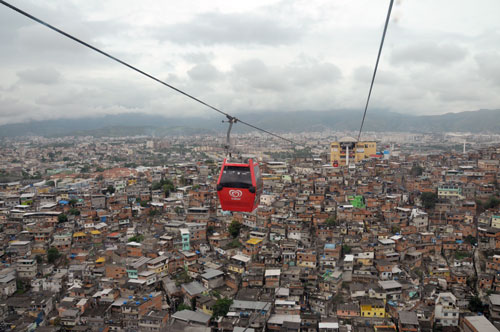
The hill tops of the slums in Rio de Janeiro used to be the least accessible areas in the city, plagued by violent drug traffic and lack of infrastructure. A recent project of cable cars, linking 5 hill tops around the favela Complexo do Alemão to a suburban railway station, is turning this reality upside down.

As ground access in the hilly area continues to be difficult, the hill tops are becoming hot spots for new economic activity and gathering. At several stations, small shops appear and restaurants are being set up for the small but steady number of tourists riding on the cable car. Close to each station, a so-called ´pacification police unit´ is installed. The cable car system is run by local workers of the neighborhood itself.

The line (see bottom of transit map) was built in 2011 and is to transport 30 thousand people per day, increasing the proximity of jobs and services. This effectively turns the former favela from a no-go area into a part of the ´formal´ city. The reduction of poverty and increase of government control of these areas are key elements of Rio´s strategy to make the city a safe place to organize the World Cup in 2014 and the Olympics in 2016. And without accessibility, non of this will be possible.

To reduce costs, cable car stations are being sponsored by Kibon and other private companies.
Watch the cable car on BBC
Pingback: May 24, 2014: Cable Car | Marketing Metropolis